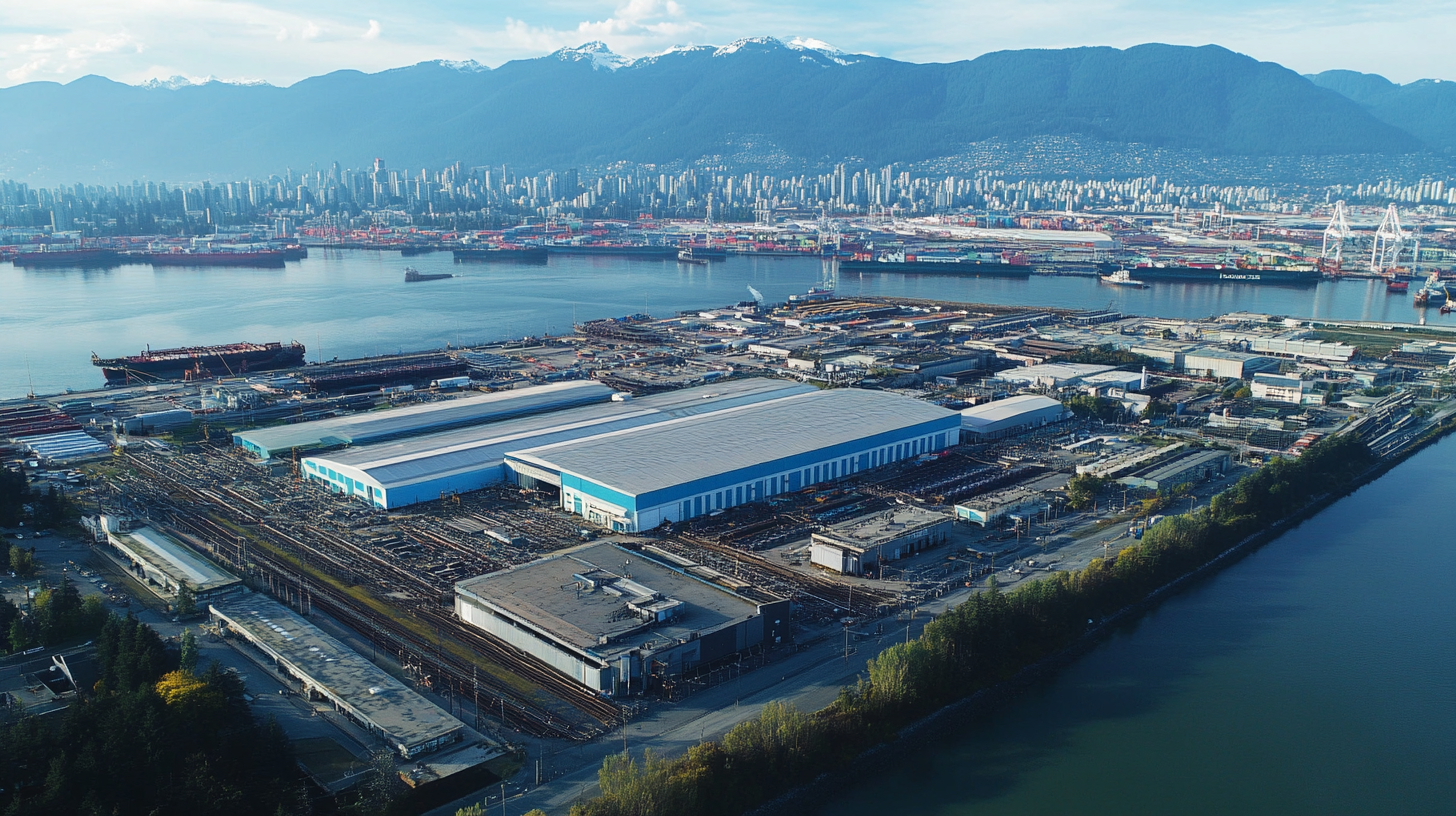Rising Above Tariffs How Best Power Solutions Solar Thrives Amid US China Trade Challenges
In an increasingly complex global trade environment, marked by rising tariffs and geopolitical tensions, the solar industry has exhibited remarkable resilience and growth. Specifically, Power Solutions Solar has emerged as a leader in navigating these challenges, revealing how adaptation and innovation can lead to success. According to a report by the Solar Energy Industries Association (SEIA), the U.S. solar market added 25.9 gigawatts of solar capacity in 2021, underscoring a robust demand for renewable energy even amidst trade disputes. As tariffs imposed on Chinese imports have sparked concerns over supply chain stability, Power Solutions Solar has pursued strategic partnerships and localized manufacturing options to mitigate impacts. This ability to rise above tariffs not only enhances competitiveness but also contributes to the burgeoning green economy, reflecting a broader industry trend towards resilience and sustained growth in the face of adversity.

Navigating Tariffs: The Landscape of US-China Trade Relations
In the complex web of US-China trade relations, tariffs have emerged as a significant challenge for many industries, particularly in the renewable energy sector. For companies like Best Power Solutions, navigating these tariffs requires not only a robust understanding of the economic landscape but also an agile response to shifting policies. With tensions between the two superpowers impacting supply chains and pricing structures, businesses must innovate and adapt to maintain their competitive edge.
To thrive amidst these trade challenges, Best Power Solutions has adopted a proactive approach, focusing on local sourcing and diversifying its supply chain. By mitigating the risks associated with tariffs, the company enhances its resilience and ability to meet customer demands. Furthermore, fostering strong partnerships within the industry allows them to share insights and strategies, which can be crucial in overcoming the hurdles posed by fluctuating trade policies. In this rapidly changing environment, companies are learning that adaptability and foresight are key to not just surviving but thriving.
Rising Above Tariffs: How Best Power Solutions Solar Thrives Amid US-China Trade Challenges
| Dimension | Details |
|---|---|
| Company Name | Best Power Solutions Solar |
| Founded | 2010 |
| Industry | Renewable Energy |
| Key Products | Solar Panels, Inverters, Battery Storage Systems |
| Headquarters | San Francisco, CA, USA |
| Annual Revenue | $150 million |
| Number of Employees | 500+ |
| Main Markets | USA, Canada, Mexico |
| Competitive Advantage | High-efficiency products, Strong supply chain management |
| Response to Tariffs | Diversified sourcing, Increased domestic manufacturing |
Opportunities in Adversity: How Best Power Solutions Innovates
In an increasingly unpredictable global trade landscape, companies like Best Power Solutions are not just surviving, but thriving by turning challenges into opportunities. The ongoing tariffs between the US and China have presented significant hurdles, particularly in the solar energy sector. However, Best Power Solutions has leveraged its innovative ethos to navigate these complexities. By focusing on local manufacturing and supply chain optimization, the company has been able to reduce reliance on foreign imports, which not only mitigates tariff impacts but also fosters job creation within the region.
Moreover, adversity has spurred Best Power Solutions to enhance its research and development efforts. The need to source alternative materials and technologies has led to groundbreaking innovations in solar panel efficiency and battery storage solutions. By investing in sustainable practices and developing proprietary technologies, the company is positioning itself as a leader in the green energy market. This commitment to innovation underlines Best Power Solutions' adaptive strategies, proving that even in challenging times, there are pathways to success through creativity and resilience.

The Role of Solar Energy in Mitigating Trade Challenges
The role of solar energy in mitigating trade challenges, particularly amid the US-China trade tensions, has become increasingly significant. As tariffs on imported solar panels and components have escalated, companies like Best Power Solutions have sought innovative strategies to adapt. According to a report by the Solar Energy Industries Association (SEIA), the solar industry has grown by 20% annually over the past decade, showcasing its resilience and ability to navigate challenges. This growth underscores the increasing affordability and reliability of solar energy as an alternative to traditionally imported technologies.
Furthermore, the transition to solar energy not only helps companies mitigate tariff impacts but also supports energy independence. A study from Wood Mackenzie indicates that the total installed solar capacity in the U.S. is expected to reach 400 gigawatts by 2025, emphasizing the sector's potential to reduce reliance on foreign supply chains. By investing in domestic solar manufacturing and local workforce development, companies can both enhance their competitiveness and contribute to broader economic growth, proving that solar energy is key to thriving in a complex trade landscape.
Solar Energy's Role in Mitigating Trade Challenges
This pie chart illustrates the distribution of various factors contributing to the rising adoption of solar energy in the face of US-China trade challenges. The data highlights how solar energy acts as a strategic asset for both environmental benefits and economic resilience.
Strategic Partnerships: Enhancing Supply Chains in Turbulent Times
In times of turbulent trade dynamics, particularly amid US-China tensions, companies like Best Power Solutions are redefining their strategies through strategic partnerships that enhance supply chains. By fostering collaboration with key players, businesses can mitigate the risks associated with unpredictable global markets. This approach not only helps in maintaining operational continuity but also enables firms to leverage shared resources and expertise, allowing for innovation in product development and service delivery.
As manufacturers face ongoing challenges, including skill gaps and the need for digital transformation, investments in robust supply chains become essential. Companies are prioritizing resilience without sacrificing efficiency. This balance is crucial, as it allows businesses to navigate uncertainties while remaining agile enough to respond to shifting consumer demands. By embracing advanced technologies and innovative practices, organizations can build a sustainable framework that safeguards their interests, ensuring they thrive even in the most chaotic environments.

Emerging Trends: The Future of Solar Manufacturing amidst Tariffs
The future of solar manufacturing is increasingly shaped by the evolving landscape of international trade, particularly in the context of US-China tariffs. According to a recent report from the Solar Energy Industries Association (SEIA), solar panel prices surged by approximately 20% in the past year due to these tariffs, impacting both costs for consumers and profitability for manufacturers. Despite these challenges, companies like Best Power Solutions are finding innovative ways to adapt, focusing on domestic manufacturing and supply chain diversification to mitigate tariff impacts.
Emerging trends indicate a significant shift towards local production and new technologies in the solar sector. Research from Wood Mackenzie forecasts that US solar installation capacity will grow to 305 gigawatts by 2030, even amidst tariff hurdles. This growth is driven by advancements in solar technology and the increasing demand for renewable energy, supported by federal incentives and state-level mandates. As manufacturers realign their strategies, we are witnessing a rise in investment in R&D, with many firms exploring alternative materials and production methods that could bypass current tariff challenges while still delivering high-quality solar solutions.
Rising Above Tariffs: Trends in Solar Manufacturing
This chart represents the growth of solar installations in the US from 2017 to 2023 amidst trade tariffs and challenges in solar manufacturing. Despite the tariffs imposed on solar products, the US solar market has shown significant resilience and growth.
